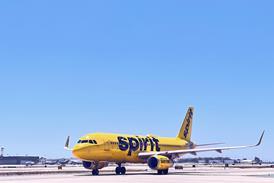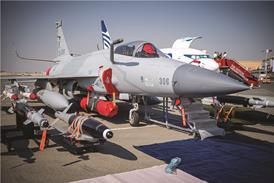Kevin O'Toole/LONDON
After five years of breakneck consolidation, positions are firming up at the top of the US aerospace league, but attention now turns to digesting the latest, and probably last, series of mergers and acquisitions.
With the 1997 round of annual financial results, Boeing reclaims its position at the head of the US league in the wake of the McDonnell Douglas merger, but Lockheed Martin is poised to underscore its second spot with the imminent $11.6 billion merger with Northrop Grumman.
The last of the big three will be Raytheon. Its merger with Hughes, completed in December, and a full year of the Texas Instruments (TI) operation, will double the size of its defence-electronics business and, together with the civil-aircraft unit, will take aerospace sales above $17 billion.
The preoccupation is now focused on making the acquisitions work, with re-organisations high on the agenda as the groups began to outline their plans for 1998.
Raytheon led the way, outlining a massive re-organisation of its new Raytheon Systems division in the wake of the Hughes merger. Divisional chairman William Swanson admits that it will see "some of the most dramatic changes ever at any defence company". The plan is to close 20 plants and shrink six more, reducing floorspace by 20% over the next two years. Some 8,700 jobs will also be cut, representing around 10% of the workforce within the division.
The aim is to integrate Raytheon's existing business together with Hughes, the TI defence-electronics business acquired earlier in 1997 and the E-Systems company, taken over in mid-1996, but still run as a separate unit. Swanson says that the overall target is to cut costs by 10-15% and pass the savings on to the Department of Defense.
Production of components and subassemblies for the whole division will now be consolidated at 14 "centres of excellence" covering areas such as circuitry, electro-optics, cables and fabrication. The work is now carried out at some 68 sites. The main manufacturing operations will be re-organised around 17 sites, down from t36. The bulk of the job cuts come in California, where around nine plants are to close or move, although El Segundo will emerge as headquarters for the group's Sensors and Electronic Systems unit.
Boeing's year-end results were dominated by the massive provisions put aside to cover write-offs at the Douglas Products division and to put straight its own production problems in Seattle. The total could mount up to the $4 billion mark as the full costs unwind.
The group had already put aside $1.6 billion to cover the Seattle problems as the ramp-up in production ran into problems. Boeing also expects to put aside another $700-800 million this year as the lines get back on track. A further $1.4 billion was set aside in the 1997 accounts to cover the cost of running down the lines at Douglas, pushing Boeing to its first net loss in corporate memory. Boeing's stock has been rising, however, with financial analysts now confident that the worst of the bad news is over, a view supported by the company's top management.
The main unfinished business is post-merger restructuring of the McDonnell Douglas businesses. Boeing says that a review of the military business, including the Rockwell defence and space units acquired in mid-1997, is under way and it promises to unveil a rationalisation proposal by the end of February. The costs and gains of the restructuring are expected to be relatively limited in the defence and space division, given the lack of overlap, but there will also be new investment plans to announce for the Douglas Long Beach plant.
Meanwhile, Lockheed Martin has largely completed its previous round of rationalisation, including integration of the Loral units. Over the last year, $1 billion-worth of non-core businesses have been sold, further units swapped in exchange for preferred shares held by General Electricand the materials business floated.
New chief executive Vance Coffman confirms that the group is on course to beat its goal of $2.6 billion in annual savings, once the rationalisation is complete, with more promised following the take-over of Northrop Grumman, now due to be completed in March.
Further down the league AlliedSignal, TRW and Litton have also been rising fast through a mix of healthy market growth and acquisition, with more in prospect to come as industry consolidation at the top continues to feed through to the second tier of US companies.
Additional reporting, Ramon Lopez

Source: Flight International























